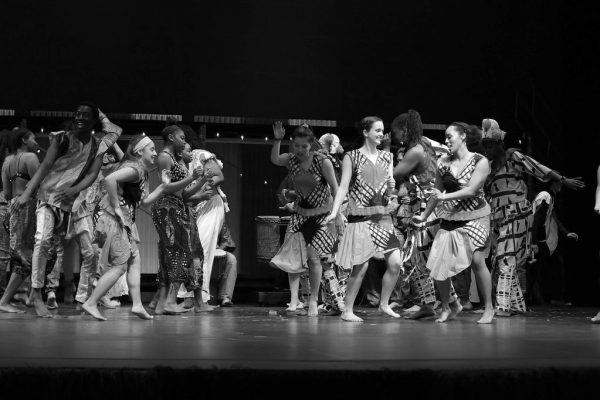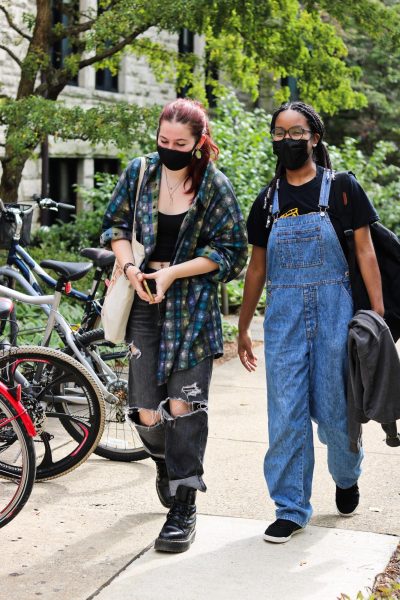Oberlin’s Early History Rooted in Religious Convictions
Editor’s note: This column is part of a series that will focus on Oberlin’s history as a town and an institution. The series will be published regularly throughout the fall semester.
In the winter of 1858, John Price, a formerly enslaved person, was captured by slave catchers traveling through Oberlin and taken to Wellington, ostensibly under the authority of the Fugitive Slave Law. A group of Oberlin residents followed Price and his captors, ultimately bringing him back to Oberlin after a prolonged standoff. Now known as the Oberlin-Wellington Rescue, the event is widely regarded as one of the key incidents precipitating the Civil War, and continues to hold an important place in Oberlin’s collective history.
Despite the significance of the moment, Charles Grandison Finney, a religious leader in the Second Great Awakening and foundational figure in Oberlin’s early history, left for England just a few weeks later without saying much about it to anybody.
For those familiar with Oberlin’s history, Finney’s omission may be surprising. After all, Finney was one of the earliest advocates for Oberlin to admit Black students — a key moment in popular narratives about the school’s social justice pedigree.
However, Finney’s apparent disregard for the Oberlin Rescuers, as the group of people who spirited Price away from Wellington came to be known, is representative of a larger, often overlooked truth of early Oberlin.
From the beginning, Oberlin’s organizing principle was religious faith. At nearly every key moment of Oberlin’s early history, religion was a key feature — from the community’s opposition to enslavement, to its endorsement of prohibition in the late 19th and early 20th centuries, and everything in between. Indeed, Finney himself felt that the abolitionist values he had initially championed in Oberlin were secondary to his central effort of religious conversion. At points, he felt that his religious work was being unfairly dominated by Oberlin’s growing focus on abolishing slavery.
While it may seem contradictory to us today, Oberlin’s early leaders were not the champions of racial equity in the ways that we often make them out to be. They were fervent abolitionists, it’s true — but that priority was tied deeply to their religious convictions. They were not devoted to social justice as we understand it; rather, Oberlinians found themselves opposed to enslavement because they believed God opposed it, and their perspective gave them a moral and theological high ground.
Take, for example, Oberlin co-founder John Jay Shipherd. A devoted admirer of Finney’s, Shipherd was instrumental in the decision to admit Black students to the then-Oberlin Collegiate Institute. He even went so far as to threaten his resignation if Oberlin did not meet a number of his demands, including racial integration.
However, Shipherd’s motivation in embracing integration was, on its face, financial — a budgetary crisis early in Oberlin’s history challenged his ability to carry out his religious mission through the school. An influx of students and high faculty salaries meant that Shipherd needed to find serious investors in order to keep Oberlin’s doors open.
Shipherd found an avenue to secure Oberlin’s long-term financial stability through a group of students from nearby Lane Seminary in Cincinnati. Known as the Lane Rebels, the group had withdrawn from the seminary due to a conflict with its Board of Trustees over the issue of abolition.
As an abolitionist on religious grounds, Shipherd traveled to Cincinnati, where he was told by the lone Lane trustee who sided with the Rebels, Asa Mahan, that New York-based businessmen and abolitionists Arthur and Lewis Tappan had promised to fund the Rebels in their post-Lane life. Immediately, Shipherd realized his opportunity and returned to Oberlin to make the case to his own trustees.
Shipherd wanted to bring the Rebels, alongside Mahan and Finney, to Oberlin. However, all of them made racial integration a key condition of their agreeing to come. Shipherd knew that he must convince Oberlin to integrate, otherwise the funding for his religious mission would be lost.
So, as a deeply racist man who openly and strongly believed in Black inferiority even as he opposed enslavement, Shipherd embraced racial integration. Even as he did so, he assured community members that he did not wish for Oberlin to “fill up with filthy, stupid” Black students. The case he made in favor of racially inclusive admissions was almost entirely pragmatic.
“The men of money which would make our institution most useful, cannot be obtained if we reject our colored brother,” Shipherd once said.
Some may question the necessity of distinguishing between different motivations; after all, if the outcome is the same, why does it matter if the decision for Oberlin to accept Black students — or an event like the Oberlin-Wellington rescue — was motivated by faith instead of a deep-seated belief in racial equity?
It matters because if we misinterpret the motivations and values of those who came before us, we cannot hope to fully understand our present-day challenges. This disconnect was a large focus of the book Elusive Utopia by Professors Emeriti of History Carol Lasser and Gary Kornblith. Their book explores the historical roots of why racial and economic divisions continue to exist in a community that is widely lauded for its social justice commitments.
It matters because the three wings of East Hall are, to this day, named for Mahan, Shipherd, and Shipherd’s Oberlin co-founder Philo P. Stewart.
In large part, this community’s early values were derived from religious piety, rather than a commitment to social justice itself. Within this context, Finney’s non-statement on the Oberlin-Wellington rescue makes much more sense. His primary goal, as well as Oberlin’s, was not to abolish slavery in order to achieve racial equity; it was to serve God, and just about everything else in Oberlin was secondary. Even Shipherd’s pragmatic search for funding was driven by his firm belief in Oberlin’s evangelical mission. Without understanding this path that led us here, which is nearly always misrepresented, we cannot hope to understand the path forward.




